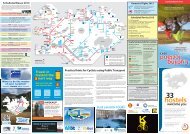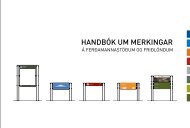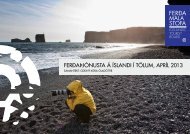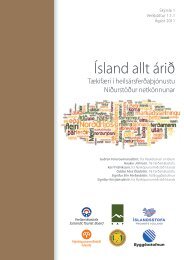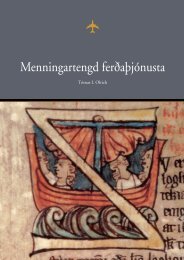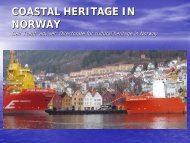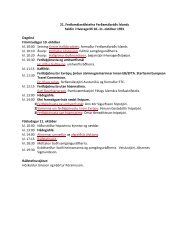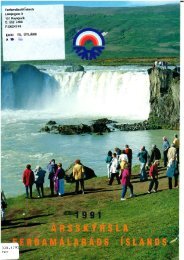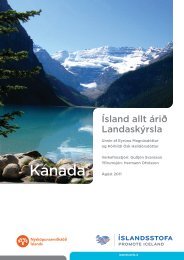Untitled
Untitled
Untitled
Create successful ePaper yourself
Turn your PDF publications into a flip-book with our unique Google optimized e-Paper software.
approach in social science in which hybrids, or non-humans and relational<br />
material agency, have been incorporated is Actor-Network Theory (ANT).<br />
Consequently, those who have tried to translate ANT into tourism studies<br />
(Franklin 2004; Jóhannesson 2005; Van der Duim 2007) have indeed<br />
emphasized this hybrid character of tourism as being “held together by<br />
active sets of relations in which the human and the non-human<br />
continuously exchange properties” (Van der Duim 2007, p. 964).<br />
ANT is thus an approach that treats entities and materialities as<br />
enacted and relational effects, and explores the configuration and<br />
reconfiguration of those relations. Its relationality means that major<br />
categories or ontological domains (for instance “tourism”, “society”,<br />
“nature”, “culture” or “human” and non-human”) are understood and<br />
treated as effects or outcomes, rather than explanatory resources. Without<br />
exchange of properties, mediations, the associations and the performative<br />
orderings of humans and non-humans through the configuration of those<br />
relations, there would simply be no tourism. Hall’s eight points that we<br />
listed earlier might well be viewed as an agenda to investigate these hybrid<br />
tourism spaces, with focus on mobility, sustainability, humans and the<br />
technologies of travel.<br />
We have indeed no difficulties in subscribing to the view that ANT<br />
has indeed much to offer tourism studies, not the least for taking nonhumans<br />
and material on board and for providing a methodology by which<br />
the performative ordering of tourism and tourists can be studied. But for<br />
the sake of our project we are obliged to try and “earthify” as much as we<br />
possibly can beyond the social. This means that it becomes important to<br />
avoid the possibility of understanding tourism as mere self-contained<br />
enclosed topologically complex being that produces its own spaces by<br />
connecting and disconnecting heterogeneous elements. For our purpose,<br />
we need to situate tourism also on the Earth as a plane of reference and<br />
provider of consistency for all actor-networking (Gren 2002). This is the<br />
fundament for thinking about tourist and tourism imaginationings, and<br />
leads us on to exemplifying the “earthification” of tourism in tourism<br />
imaginationings.<br />
Tourism in the world - on the Earth<br />
“World” is often used to mean something intrinsically related to human<br />
civilization or to specifically human realms of experience, understanding,<br />
or the human condition in general. This is the sense of “world” one gets in<br />
97



